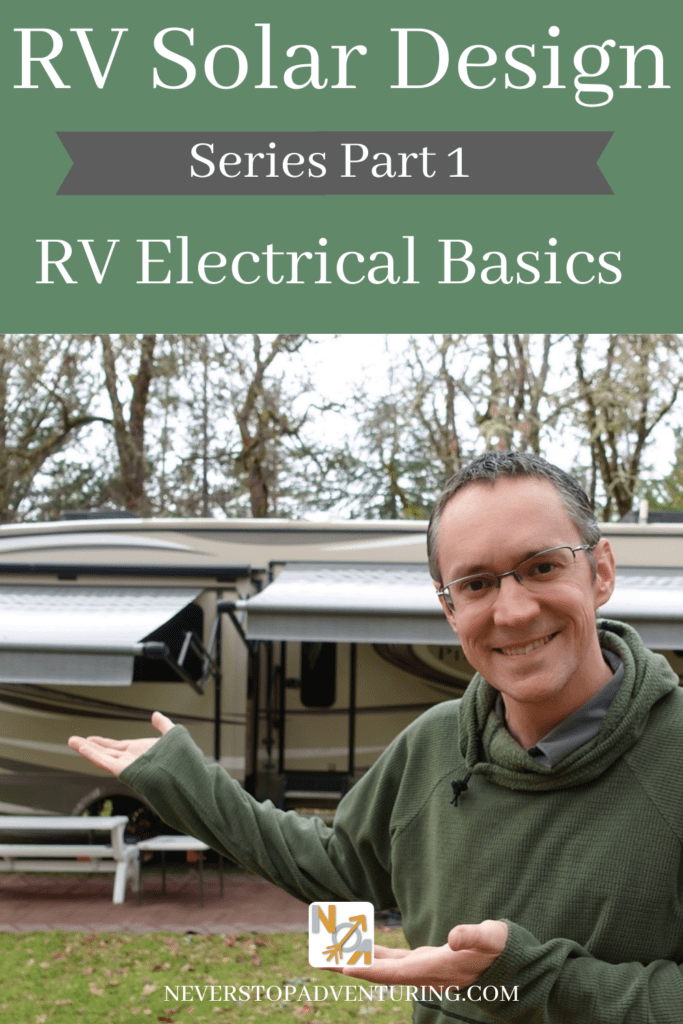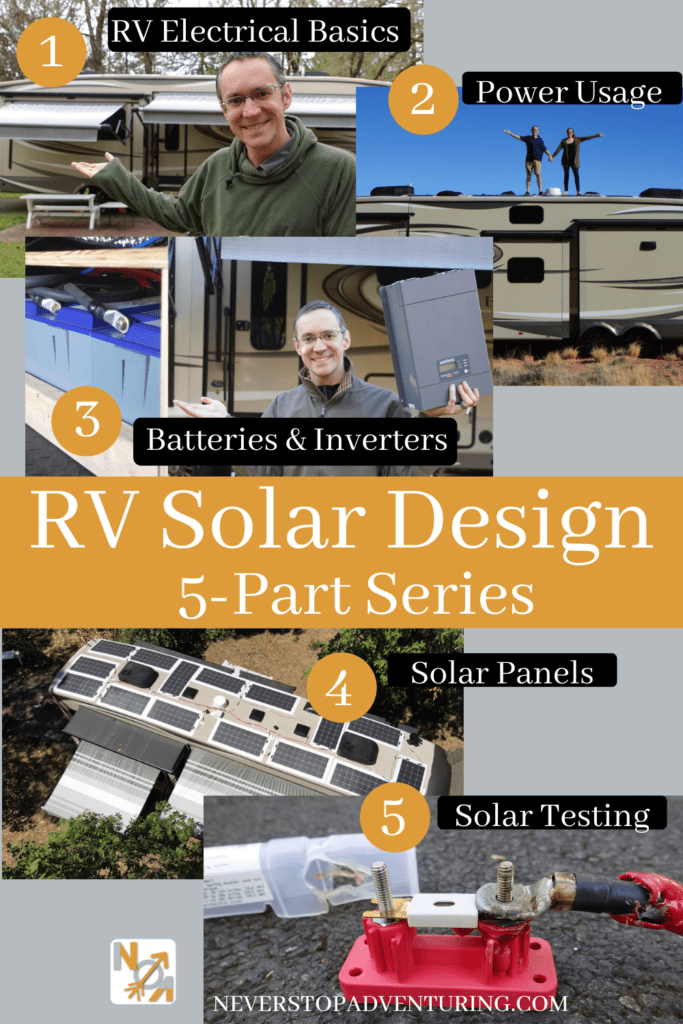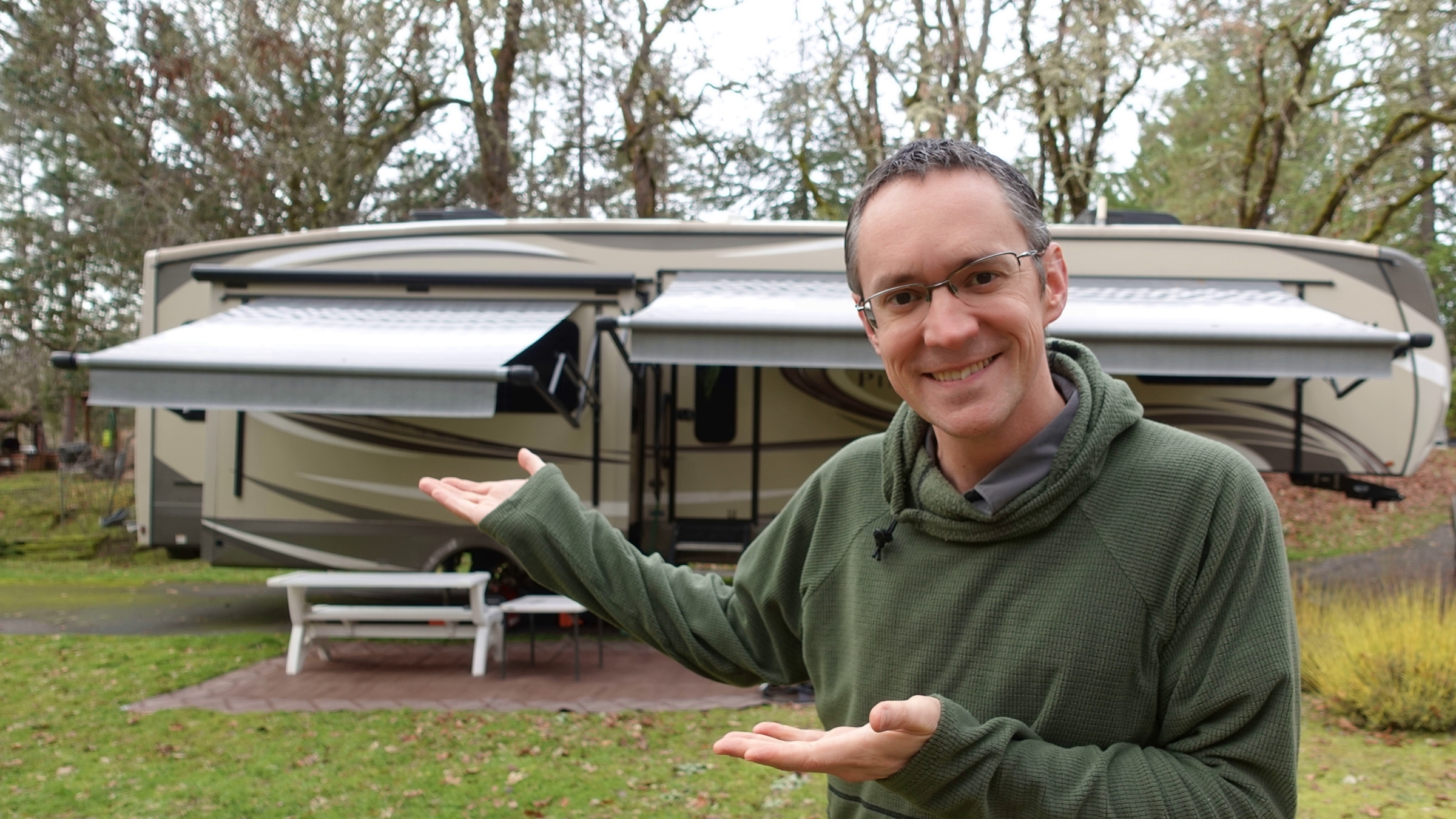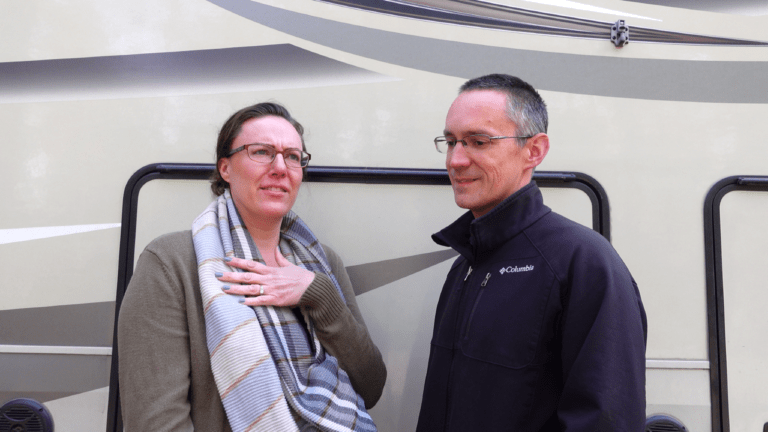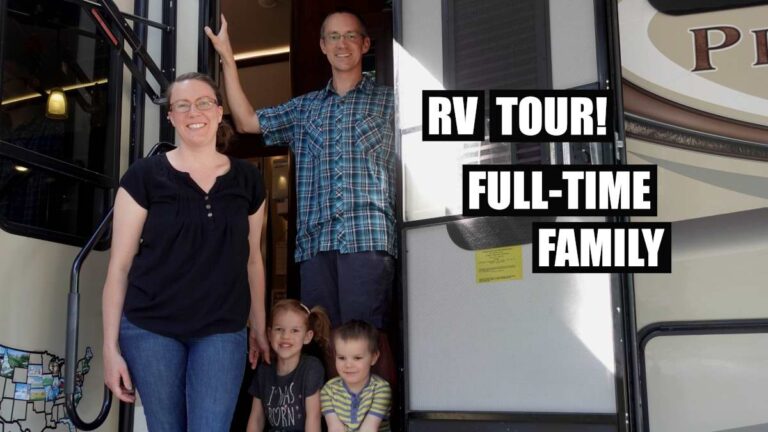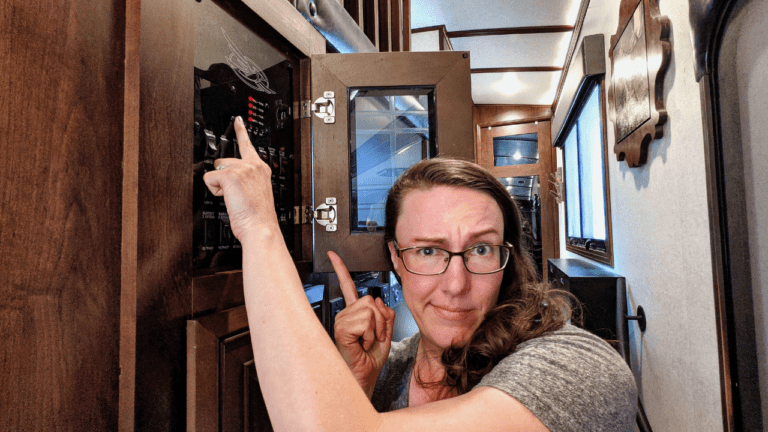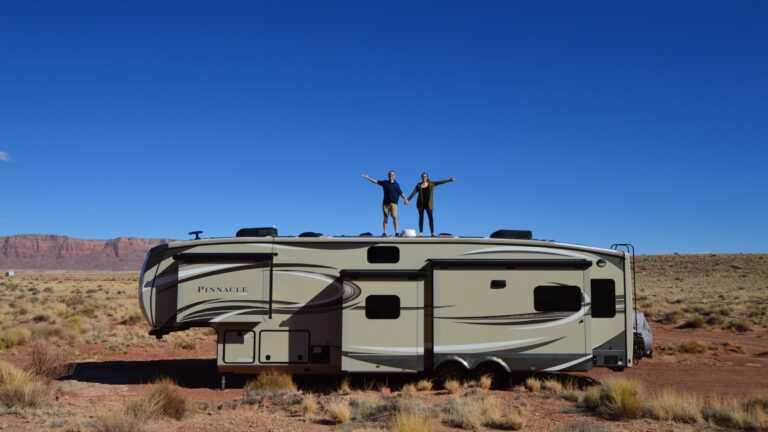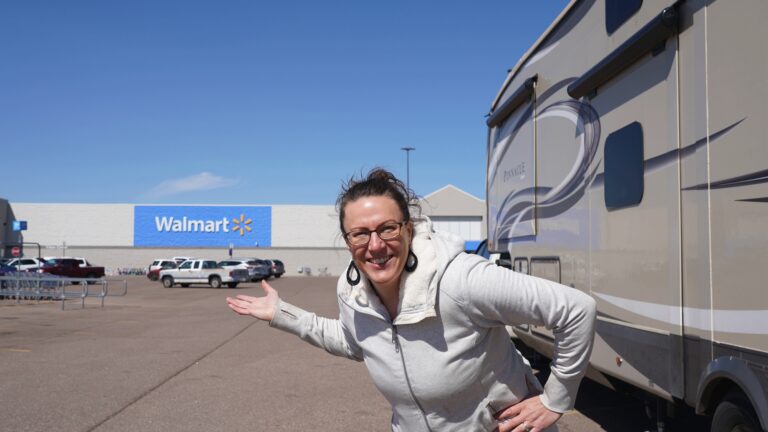RV Electrical Basics & Solar Design How To Intro
This is the first in a five part series on how to design your own system, no matter if it’s a large array to run AC units, a small camper van, or something in between! First and foremost, let’s cover some RV electrical basics!
We are now part way through our second year with our large RV Solar System. It has been really freeing to not rely on a generator to keep our residential fridge going when we’re away from a campground. On top of that, we can run our ACs! 2625W of solar panels might not be right for everyone, but there are lots of ways to build a system! Let’s dive into the basics!
We’d love it if you’d like to subscribe to us on YouTube also!
DISCLAIMER: This post may contain links to affiliate websites. When you click on and/or make a purchase through an affiliate link placed on our website, we may receive a small commission or other form of compensation at no additional cost to you. Please read our disclaimer for more info.
RV Electrical Basics Video Transcript:
Let’s talk DIY Solar Setups, from a large RV, to a smaller trailer, a van build, or maybe just a portable system.
Hey everyone, I’m Kevin and I’ve been full-time RVing with my wife and two kids since the beginning of 2018. Our videos on our big solar install have been really popular so I thought I’d talk about the process I went through to design it.
This video will be the 1st in a 5 part series on planning and designing a solar system that meets your needs, whatever your power goals are. I’ve got a little over 2600W of panels on the roof and I definitely wouldn’t say that that’s for everyone.
And, real quick, I just wanted to throw a couple of things out there: I have a background in engineering but I really don’t think that’s necessary to pull this off. I’m not going to tell you that a complete solar setup is simple, because it’s not, but like everything else, if you break it down into its parts, it’s not overly complicated. I’m also not a professional solar installer, so definitely do your own research as well!
Each of these videos will have chapters in the description so you can feel free to skip ahead as needed. Next, I’m going to cover the basics of RV electrical systems and some terminology. Then I’ll talk a little more about our particular system and why we went with what we did.
RV Electrical Systems
Alright, RVs have two VERY different electrical systems. There’s the 12V system, and the 110 or 120V system. Think of the 12V system as something very similar to a car and the 110 or 120V system as what you get in a regular house. The 110/120 side is AC or Alternating Current while the 12V side is DC or Direct Current. To keep from going too far down the rabbit hole, if you want know more about Direct Current vs Alternating Current, hit pause and go look that up real quick. Otherwise, it should also be noted that neither one of these systems actually operates on the exact voltage that they are named for!
12V System
The 12V system is powered by your battery or battery bank if you have more than one. It actually operates anywhere between about 11.5 to about 14.7V. At 11.5V, that would mean your battery is pretty much dead, while 12.6V is what a regular deep cycle battery looks like when it’s fully charged. That’s typically what an RV comes with. Anytime your battery charger is on you’ll see voltage in the mid 13’s to 14’s. Anyway, this powers your lights, water pump, fans, slides, motors for your jacks or a leveling system, awnings, and sometimes your fridge. If you have a power port that looks like the cigarette lighter style ones in a car, that’s also run on your 12V system. Sometimes RVs are made with USB ports that are also run off your batteries.
110V / 120V System
Next, the term 110V or 120V system is used interchangeably. It’s what you get when you’re plugged in at a campground and we mostly just think of this as a standard household electrical plug. In a house, this is usually between 114 to 126V. Campgrounds…let’s just say that the surge protector (or EMS) that we use will allow anything between 104-132V. So, normal voltage is actually a pretty wide range! Outside of your regular outlets, this side of your electrical system also powers your air conditioner, microwave, the electric side of your water heater, your converter – also known as your battery charger, and once again, sometimes your fridge. We’ll talk more about refrigerators in the next video!
The last thing I want to mention here before we move on is how these two system interact. Mostly, they don’t. Just kidding, the biggest interaction is that any RV I’ve ever heard of charges the battery, the 12V system, when the 120V side is plugged in. That’s normally done via a device called a converter. It’s often hidden away inside your breaker box and they’re specifically designed to work with regular deep-cycle batteries that all RV’s come with. I mention that because I’ll touch on that again in the Batteries and Inverters video later.
Electrical Terminology
Volts, Amps, Watts, Amp Hours, and Watt Hours. Let’s cover some terminology to better make sense of what’s coming later.
Volts, Amps, & Watts
Think of electricity like a water pipe. Voltage would be water pressure and Amps or Amperage would be the amount of water flowing through the pipe. Something interesting to note here is that if you move a lot of Amps through a wire, it gets hot. Next, let’s talk about Wattage. Also known as power, this is just Volts times Amps. So to run an appliance like a Microwave or a Hairdryer that runs on 1500W, which is pretty accurate, running that on your 120V system means you are pushing 12.5 Amps through that wire. 120V times 12.5 Amps is 1500 Watts.
Now let’s pretend you wanted to run a 1500W appliance off of your 12V system. Your microwave isn’t designed for that, but there is such a thing as a 12V water heater so let’s go with that. To run a 12V water heater that needs 1500W of power would require 125 Amps! That’s enough to create some serious heat in a wire! My point here is that it’s always better to operate a high power appliance at higher voltage. It wastes power to generate all that extra heat. Sometimes we just do what we can with what we have…but again, we’ll talk about compromises in another video.
Amp Hours & Watt Hours
So we’ve covered Volts, Amps, and Watts. Two more terms I wanted to touch on are Amp Hours and Watt Hours. These are Amps or Watts over a period of time, an hour obviously, and these are how batteries are rated. Batteries just store power, so if a Lithium battery is rated at 12V and 100AH, that means that, theoretically, you can hook it up to a 12V system and pull 1 Amp out of it for 100 hours, or 2 Amps for 50 hours, or 100 Amps for 1 hour…you get the picture.
Watt Hours is another useful way of thinking about how much power is stored in a battery bank. Especially in situations where you might be operating at a different voltage. So a 12V 100AH battery stores 1200WH. In our case, we have 6 12V, 100AH batteries, or 7200WH, or 7.2kWH. Again, we’ll get into this kind of stuff more when we talk about batteries in another video.
Solar System Design Goals
I mentioned we have 6 100AH batteries to go with our 2625W solar system. That’s actually an oversized solar array for that battery bank. When I set out to design our system, my goal was to be able to run our AC units in the summertime, when the sun was shining. That’s exactly what it does, but it takes a lot of equipment to run high power appliances.
Inverters
We have two 3000W Inverters, and I just realized we haven’t talked about Inverters yet. Earlier I mentioned a converter is actually a battery charger. So a converter uses power from your 120V system to charge your 12V batteries. An Inverter does the opposite, it uses power from your batteries to power your 120V system. This is how you get regular 120V power when you don’t have a connection at a campground or a generator.
I mention the design goal of our system because that’s honestly the very first step in designing your own solar system. What do you want to run when you’re away from a campground? How much power do you use on a typical day? Are you headed into the desert in the Southwest for a week and just want to run some lights, fans, charge a phone, and run a laptop? That’s a way different scenario than running a coffee maker every morning, TV’s and a residential fridge all day, and a furnace all night! That’s all covered in Part 2, where, now that we’ve covered the RV electrical basics, you’ll be ready to make your own design goals!
If you liked this post, would you share it with friends? Thank you!
If you’d like to read about our RV and other RV adventures, then check out some of our other posts :
- How To Lose One Of Your 15 Solar Panels
- RV Solar System Installation Series // 7.2kWh Batteries & 6kW Inverter Upgrade
- RV Solar System Installation Series // 2625W of Solar
- RV Solar System Lessons Learned
- Soft Starters For Your RV Air Conditioner, Why?
- RV Tank Sensors Not Working? We Use An RV Water Flow Meter Instead!
- Portable RV Waste Tank, Freshwater Tank and Pumps
Pin For Later:
